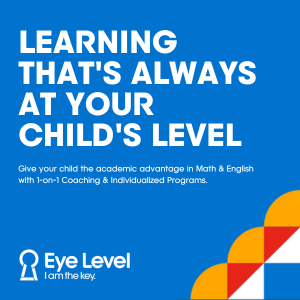
Different students have different learning styles. According to a study by Walter Burke Barbe and further developed by Neil D. Fleming, there are three different learning styles that go by the acronym VAK. Teachers will be able to help their students learn better if they know their students’ primary learning style.
1. Visual
Visual learners are individuals who absorb and understand new information well when delivered to them through graphic depiction of relevant symbols such as diagrams, charts and other visuals. Large chunks of information when simplified in one visual works best for them. Visual learners are able to visualise a passage from a book they read from a moment ago and envision images easily.
If your student is a visual learner, you could supplement the class lessons with printed handouts or diagrams and other forms of visuals. Moreover, you could also add bright colours to the visuals that you prepared for the class to help students retain information better. In addition, you can personally make or teach your visual learners to make their own flashcards or powerpoint with symbols or simple images so they can connect the information that you taught with the relevant visuals. Teachers can give written feedback instead of verbal feedback to visual learners as this helps them to process the feedback better. When giving instructions, teachers can demonstrate how to do a task instead of relying on verbal instructions. To help ease the process of learning new knowledge for visual learners, teachers can use half of the class period to give lessons, and then put students in pairs or small groups to work on in-class tasks.
2. Auditory
Auditory learners, also known as aural learners, work best when they are presented with new information through spoken words by the teacher. Therefore, they may prefer to fully concentrate on what the teacher is saying instead of taking notes during classes. These learners are able to retain the information given by the teacher and will have no issue in actively participating in class or following verbal directions given by the teacher. In-class discussions with classmates are also very helpful for them. However, aural learners would be distracted easily if they were given in-class tasks that would require them to read or write in between lessons.
If your student happens to be an auditory learner, you could suggest to them to record the in-class lessons which they can refer to during revision where they can take notes of important content. You can also record your own lessons for the students. Besides that, you can enhance your students’ learning process by encouraging in-class activities that involve group work where students can have discussions where they bounce their ideas off each other and test each other’s understanding of the lessons. In addition, you can encourage your students to participate in discussions and reward them for participating.
3. Kinesthetic
Kinesthetic learners are individuals who prefer to be physically involved in their learning process. These learners prefer the hands-on method of learning because they are active in nature and they utilise all their senses when they receive, absorb and decipher new knowledge. Therefore, kinesthetic learners tend to struggle in a normal classroom setting where they might get fidgety. Therefore, these learners work well with skills-based classes where they are able to engage with the learning materials instead of classes that centre upon conceptual or abstract subjects.
If your student happens to be a kinesthetic learner you can incorporate short breaks in between your class period and encourage your students to do some simple stretches or jumps to channel out their excess energy as these learners may get restless if they sit down for long periods of time. Besides that, you can let your kinesthetic students be involved with in-class tasks such as giving out handouts to their peers, arranging desks and chairs, or even writing on the board when answering questions in class. If your student finds it difficult to understand a topic, you can teach them to use objects such as toy blocks or drawings to visualise the topic as kinesthetic learners have good motor memory.
There are students who have more than one learning style. These individuals are known as “multimodal learners”. Once you have identified each student’s learning style, you will be able to help him or her learn better.
References:
https://teach.com/what/teachers-know/learning-styles/
https://www.thoughtco.com/whats-your-learning-style-3078119
https://www.thoughtco.com/visual-learning-style-3212062
https://www.thoughtco.com/the-kinesthetic-learning-style-3212046
https://www.thoughtco.com/auditory-learning-style-p3-3212038
If you have enjoyed reading this article, you may enjoy reading the following articles:
• The Importance of Learning a Second Language (Pg. 28-29)
• Safety Precautions for Students Returning to School during COVID-19
• 5 Common Learning Disabilities in Children
• 6 Tips on Self-Learning a Foreign Language
• What You Need to Know About Bullying in Schools
To find out more about international schools in Malaysia, read the full copy of the Education Destination Malaysia: Guide to International Schools 2020/21 Edition here.













![[elc International School] NO SHORTCUTS: WHY THINKING STILL MATTERS](https://mint-edm.sgp1.digitaloceanspaces.com/production/XTvbqZxxQQxUHjyDcClxCortA5SxNs.png)




















